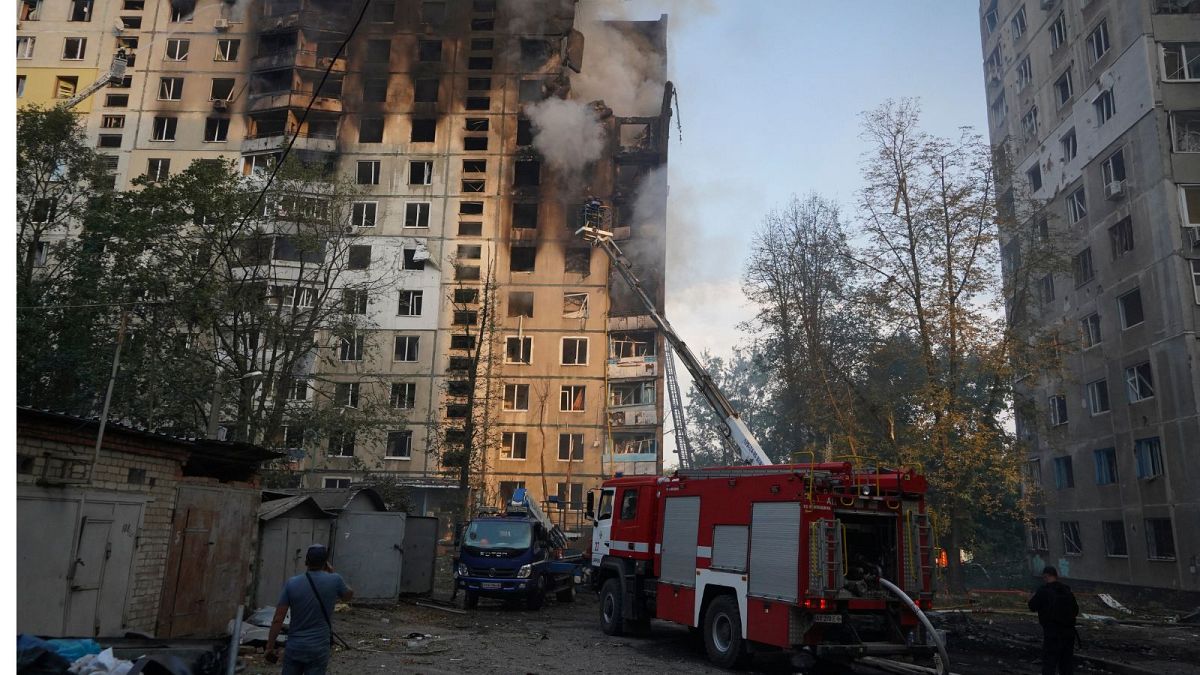A recent Russian attack using powerful glide bombs in the northeastern city of Kharkiv resulted in the deaths of six people and left 47 others wounded, according to regional Governor Oleh Syniehubov. The devastating bombs struck five locations across the city, including a 12-story residential building where at least one person was trapped. Ukrainian President Volodymr Zelenskyy called for the lifting of restrictions on Ukrainian military targets, emphasizing the need to stop the terror caused by Russian attacks in the country. As a result of these attacks, the country’s air force commander was fired by Zelenskyy, following the crash of an F-16 warplane provided by Western partners during a Russian bombardment.
The firing of Lt. Gen. Mykola Oleshchuk, the commander of Ukraine’s air force, was announced on the presidential website as part of efforts to strengthen the country’s military leadership and protect soldiers. An investigation was underway with U.S. experts joining to determine the cause of the crash and the circumstances surrounding it. The loss of the F-16, which was part of a recent delivery of such aircraft to Ukraine, has raised concerns among military analysts regarding Ukraine’s ability to operate the jets effectively in the face of Russia’s superior air force and defense systems. Despite the challenges, Ukrainian officials welcomed the supersonic jets as an opportunity to counter Russia’s air superiority.
Meanwhile, as the Russian army continues its advance into eastern Ukraine, Ukrainian forces have managed to hold ground in the Kursk border region of western Russia following a recent incursion. Amidst the ongoing conflict, controversy arose regarding claims by a Ukrainian lawmaker about the downing of the F-16 by a Patriot air-defense system. The accusation led to criticism from Oleshchuk, who defended the air force’s integrity and denied the lawmaker’s allegations. While the loss of military equipment in the conflict was expected, any loss of F-16s and trained pilots could have a significant impact on Ukraine’s ability to operate these jets effectively.
In response to the escalating conflict, European Union defense ministers agreed to enhance their training program for Ukrainian troops by raising the target to 75,000 and adding 15,000 more by the end of the year. The training program aims to meet the specific needs of Ukrainian forces and enhance their capabilities in the face of Russian aggression. Furthermore, the EU plans to establish a coordination and liaison cell in Kyiv to facilitate a more effective training effort. With 60,000 troops having already passed through the training program, the EU’s focus on enhancing Ukraine’s military capabilities reflects the growing support for the country amidst the ongoing conflict.









